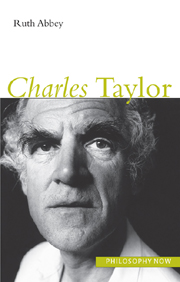2 - Interpreting selfhood
Summary
Introduction
In Sources of the Self, Taylor contends that while people have always had some perception of themselves as individuated beings, their self-understandings have not always revolved around the concept of the self. In any society at any time, an individual can experience himself as the source of a particular experience or sensation. As an example he takes an individual's fear that a mammoth is charging toward him. The individual's terror passes into relief when he is spared but then regret that his friend was eaten. In this situation, the survivor clearly has a sense of himself as a being who is in some way delineated and separate from others (Taylor 1989a: 112–13, 118–19). None the less, the idea that one has a self, that we can talk about selfhood as some distinct phenomenon is, Taylor proposes, a modern development (ibid.: 28; cf. 1988c: 298–9; 1991c: 304, 307). The same applies to the notion of identity: “Talk about ‘identity’ in the modern sense would have been incomprehensible to our forebears of a couple of centuries ago”. As this suggests, he thinks that the ways in which people understand themselves change, both over time and across cultures: “There are different ways of being a person, and these are linked with different understandings of what it is to be a person” (1985c: 276). A major portion of this chapter is, therefore, devoted to charting the changing understandings of what it is to be a person that Taylor identifies as pivotal in the history of western thought and in the creation of the modern identity.
- Type
- Chapter
- Information
- Charles Taylor , pp. 55 - 100Publisher: Acumen PublishingPrint publication year: 2000



